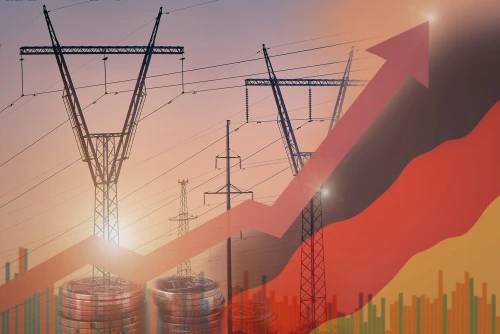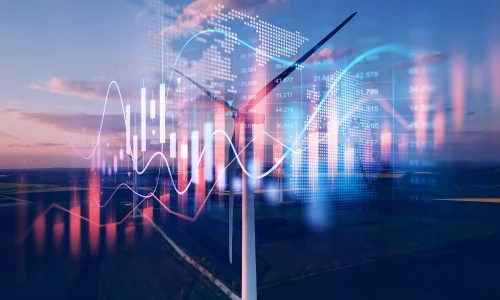
April 24th, 2025
Join our Italian Energy Day on 20 May – Book now
Direct Air Capture (DAC) is a technology removing existing carbon dioxide from the atmosphere, offering a vital solution to combat climate change.

While carbon reduction methods are key to reducing carbon emissions, carbon removal of carbon dioxide already present in the atmosphere is even more crucial. One of the emerging technologies in this area is Direct Air Capture (DAC). This works by removing carbon dioxide directly from the air.
While carbon reduction strategies focus on minimising future emissions, carbon removal technologies like Direct Air Capture (DAC) are essential for addressing existing CO₂ in the atmosphere. DAC works by directly capturing carbon dioxide from the air, using a three-step process:
Airborne carbon dioxide is detected and extracted using specialised chemicals.
Aqueous alkaline solvents or sorbents react with CO₂, trapping it and allowing heat to regenerate the chemicals for reuse.
The captured carbon dioxide is securely stored, often underground, ensuring long-term removal.
DAC enables industries to reach net-zero carbon emissions by removing existing atmospheric CO₂. For companies unable to eliminate all emissions through operational changes, DAC provides a viable solution for offsetting residual emissions.
DAC offers opportunities for carbon utilisation in sectors such as energy and manufacturing. By integrating DAC systems with existing monitoring platforms, these industries can track carbon removal in real-time, aiding in carbon footprint modelling and reduction.
DAC requires significant energy input due to the high temperatures necessary for chemical reactions. For instance, solvent-based systems may need temperatures up to 900°C, leading to substantial energy demand and associated emissions.
The operational and upfront costs of DAC remain prohibitive. Despite potential cost reductions through scaling, DAC currently represents one of the most expensive methods of atmospheric carbon removal.
DAC faces scalability issues due to land requirements and the limited maturity of the technology. Large-scale deployment could compete with agricultural land use, while further research and development are necessary to enhance efficiency and reduce costs.
One notable project is Deep Sky, a Canadian initiative aimed at advancing DAC technology. Launched in December 2024, it expects to capture 3,000 tonnes of CO₂ annually, with a goal of 30,000 tonnes per year by 2034.
Location: Alberta, Canada
Method: Geological sequestration
Companies Involved: Skytree, Airhive, Avnos, Phlair, Greenlyte Carbon Technologies, Mission Zero, NEG8 Carbon, Skyrenu
DAC developers from Europe, such as Skytree, have partnered with Deep Sky to deploy DAC units powered by Alberta’s renewable hydroelectric energy.
DAC technology is finding applications beyond energy, particularly in:
Agriculture: Creating climate-neutral animal feedstock
Transportation: Producing synthetic aviation fuels
Food and Beverage: Providing CO₂ for carbonated drinks
Innovations are underway to overcome DAC’s current limitations. Companies like Climeworks are leading the charge by using geological storage with minimal land and water usage. Additionally, policy support and emerging market opportunities are encouraging DAC scaling.
Low-temperature heat treatments to reduce energy consumption
Modular plant designs for flexible deployment in various locations
Compared to traditional carbon capture and storage (CCS), which only captures emissions at the source, DAC offers a broader solution by removing already-released atmospheric CO₂. As innovations continue, DAC could play a pivotal role in global carbon reduction strategies.
While DAC holds immense potential for carbon removal and utilisation, it faces challenges like high costs and energy demands. Continued innovation and policy support will be crucial for scaling this promising technology.
Leverage real-time carbon tracking to reduce decarbonisation goals with our carbon intensity toolkit.

April 24th, 2025

April 23rd, 2025

April 22nd, 2025